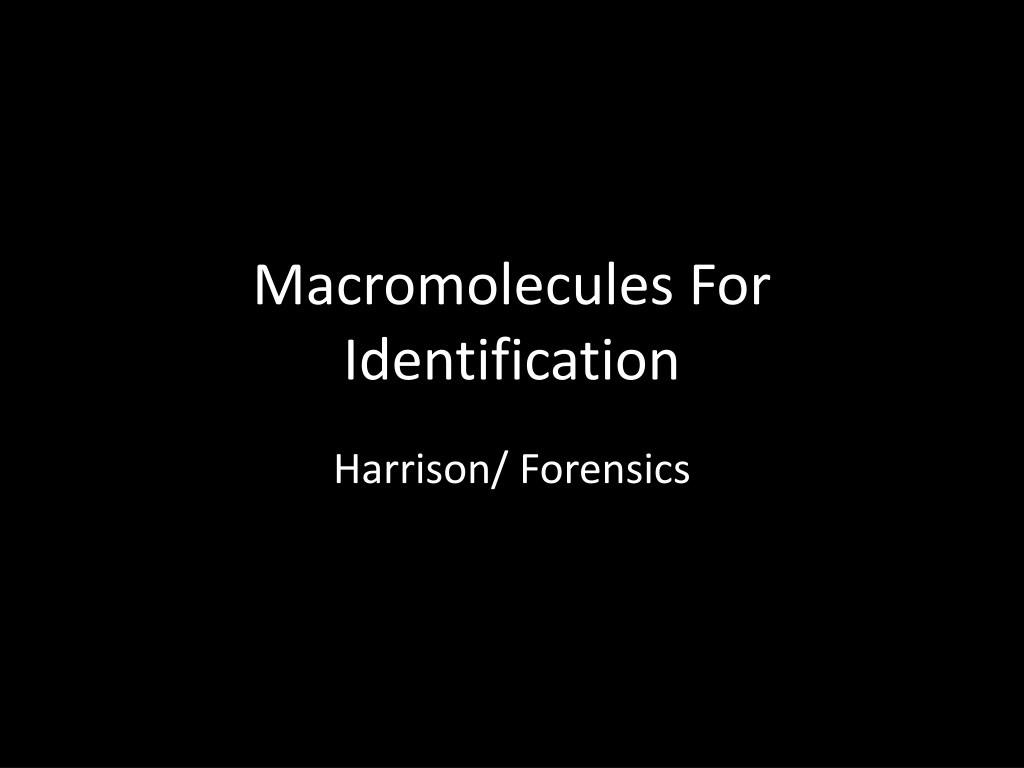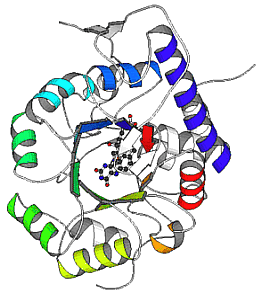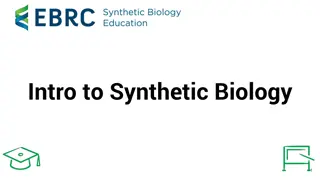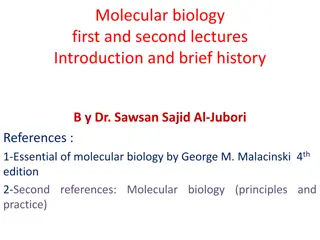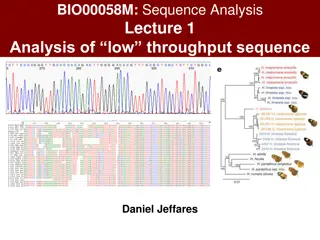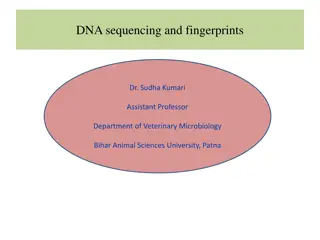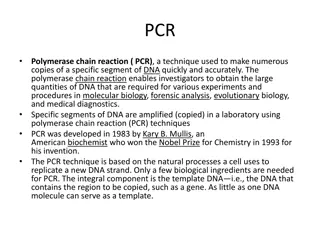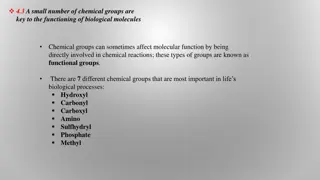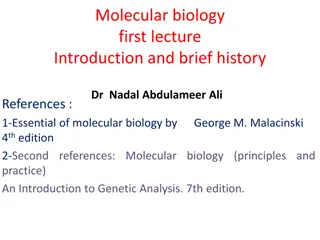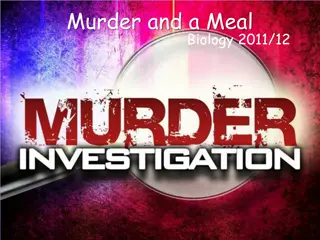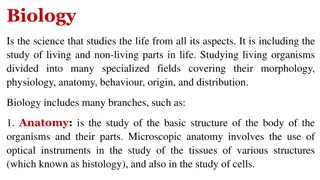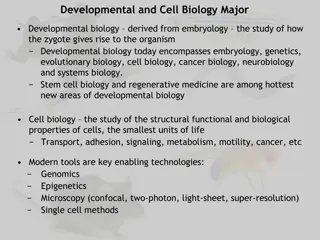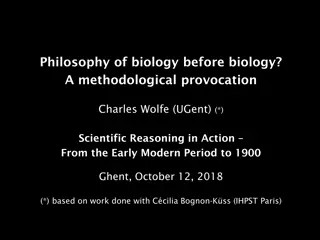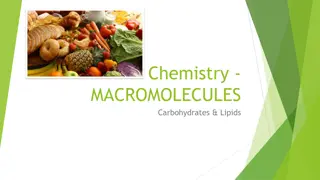Macromolecules in Forensics and Biology
All living organisms contain essential organic macromolecules - lipids, proteins, carbohydrates, and nucleic acids - composed of carbon, hydrogen, oxygen, and other elements. These macromolecules serve vital functions in cellular processes and structure, with carbohydrates providing energy sources and storage, lipids acting as long-term energy reserves, and proteins and nucleic acids playing key roles in genetic information and cell function. This detailed exploration sheds light on the building blocks, types, and significance of macromolecules in biological and forensic contexts.
Download Presentation

Please find below an Image/Link to download the presentation.
The content on the website is provided AS IS for your information and personal use only. It may not be sold, licensed, or shared on other websites without obtaining consent from the author.If you encounter any issues during the download, it is possible that the publisher has removed the file from their server.
You are allowed to download the files provided on this website for personal or commercial use, subject to the condition that they are used lawfully. All files are the property of their respective owners.
The content on the website is provided AS IS for your information and personal use only. It may not be sold, licensed, or shared on other websites without obtaining consent from the author.
E N D
Presentation Transcript
Macromolecules For Identification Harrison/ Forensics
All living things contain organic macromolecules: Lipids, proteins, carbohydrates and nucleic acids. Characteristic for these organic molecules is that they are made up of only a small number of elements: Carbon, hydrogen, oxygen, and to smaller amounts nitrogen, phosphorus and sulfur. They are called "macromolecules" because they are very large, containing long chains of carbon and hydrogen atoms and often consists of repeating smaller molecules bonded together in a repeating pattern (polymers).
Type of molecule: Amino Acid Nucleotide Monosaccharide Fatty Acid
Macromolecule building block Protein amino acids Carbohydrates monosaccharides Lipids glycerol + fatty acids Nucleic acids nucleotides
Carbohydrates Carbohydrates are better known as sugars and starches. Monosaccharides or simple sugars such as glucose and fructose (C6H12O6) function as energy source in cells during cellular respiration and are also used to build cell structures and other organic molecules within the cells. Disaccharides are composed of two monosaccharides joined together. Sucrose (table sugar) is a disacharide composed of one glucose and one fructose molecule. Polysaccharides: Are long chains of monosaccharides bond together. Plants store excess glucose in the form of starch, a polysaccharide composed of long chains of glucose. Starches can be found in potatoes, rice, wheat, corn, bananas, peas, beans, lentils, and other tubers, seeds and fruits of plants. Animals (and humans) store excess glucose in the form of glycogen in the liver and muscles.
Lipids A lot of lipids function as long-term energy storage. One gram of fat stores more than twice as much energy as one gram of carbohydrates. Lipids are also an important component of the cell membrane. Lipids consist of glycerol and fatty acids "tails". The fatty acid "tails" are long chains of carbon and hydrogen that contribute to the non-polar behavior of fats - they don't mix with (polar) water.
Proteins Proteins are complex, specialized molecules composed of carbon, oxygen, hydrogen, nitrogen and sometimes sulfur. The building blocks of proteins are amino acids. There are 20 different amino acids that combine to form polypeptides (proteins). The different amino acids are similar in structure. The different amino acids have different side chain, but are otherwise identical. Proteins have many important roles in organisms. Structural proteins such as collagen or elastin, provide support. Regulatory proteins such as enzymes control cell processes. Proteins also play an important part in the immune system (antibodies), oxygen transport (hemoglobin), movement (muscles) etc.
Nucleic Acids are composed of building blocks called nucleotides. Each nucleotide is made of a sugar molecule, a phosphate molecule and a nitrogenous base. In DNA (deoxyribose nucleic acid) the sugar is a deoxyribose and the nitrogenous bases are adenine, guanine, cytosine and thymine. In RNA (ribose nucleic acid) the sugar is a ribose and the bases are adenine, guanine, cytosine and uracil. Nucleic acids carry the genetic information within cells. (Nucleic acids won't be explored in this lesson. )
Testing for Macromolecules You can run different chemical tests to determine what molecules are present. This is how you determine what is present in stomach or intestinal contents. http://www.nuffieldfoundation.org/sites/default/files/PB_investigating-the-effect-of-amylase-on-a-starchy-foodstuff.jpg
Testing for carbohydrates STARCH Testing for the presence of starch (complex sugar) Lugol's reagent (iodine solution) changes from yellowish-brown to dark purple/black. Add 4 drops of Lugol s reagent to a small sample Mix together with toothpick Observe color for possible change
Sugars Testing for simple carbohydrates (monosaccharides & disaccharides) Benedict's solution is used Benedict's solution is a blue colored liquid that contains copper ions. When Benedict's solution & simple carbs are heated, the solution changes to orange red/ brick red. Add 10 drops of solution & sample to test tube. (and H2O if needed. Heat with a water bath for 5 minutes. (heat in test tube, hold with clamp) Observe for color change
Testing for lipids 2 possible tests Grease spot test/Brown paper test As we all know from experience, lipids leave translucent spots (grease spots) on unglazed brown paper bags. Add sample to brown paper Let sit for at least 1 minute Remove sample Let paper air dry (minimum of 5 minutes) Observe for grease stain that may remain
2ndlipid test option Sudan Red test Sudan red is a fat-soluble dye that stains lipids red. Using Sudan red can show the amount and the location of lipids. Add 5 drops of Sudan Red to sample. Mix with toothpick Observe for red color appearance (not recommended for testing red or pink samples)
Testing for proteins Wright s Test Wright s Blue solution will turn bright pink in presence of proteins. Add 5 drops of Wright s solution to sample Mix with toothpick Observe for color change
